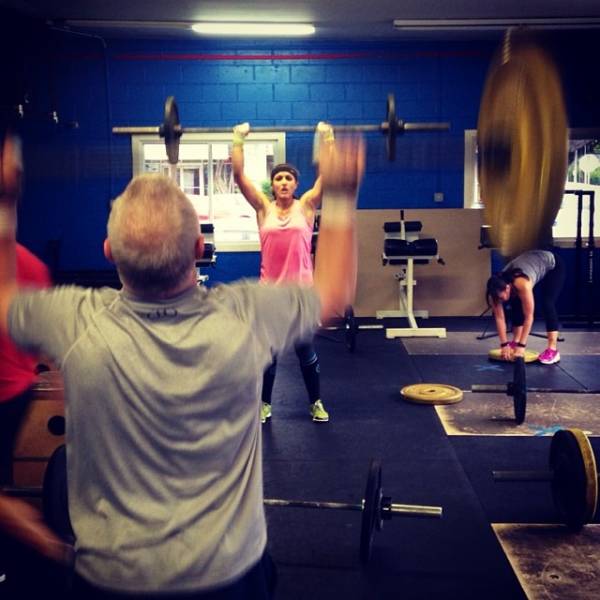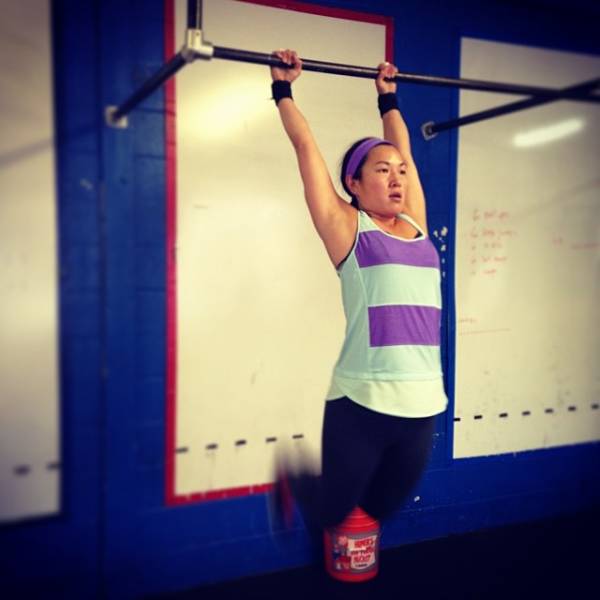Note: This article dovetails into the excellent article written by Mark Rippetoe “CrossFit – The Good, the Bad, and the Ugly,” where he expertly lays out some of the issues about CrossFit, specifically relating to the plateau.
Everybody remembers his or her first WOD. Mine was at an elementary school playground with a brand-new, soon-to-be affiliated group just getting off the ground. The trainer handed me a medicine ball and, using the side of the building, demonstrated wall-ball shots and told me to do a hundred of those while she tended to some other clients. My response, I specifically recall, was, “What happens when I am done? Should I just keep doing sets of a hundred?” Little did I know.
Most of us can harken back to that first exposure to CrossFit and fondly reminisce, as if it was our first hit of heroin. It grabbed us that hard. “I was hooked!” is usually the phrase uttered with respect to our first workout. Read any trainer bio on any box website and you will probably see those words.
The Honeymoon
The early days of our CrossFit careers are much like a honeymoon. Everything is sheer bliss. You check in on the website the night before and, when hitting “refresh” reveals tomorrow’s WOD, that rush of fear, anxiety, and eagerness shoots right through your belly. And while your gut tells you it’s going to be awful, your head still says, “This will be epic!” What a magical cocktail. The very potent comingling of nervous anticipation and sheer eagerness, coupled with results.
Part of this honeymoon phase involves daily discovery and change. Be it the way your body looks when you look in the mirror, how your clothes fit, or how you are able to actually perform, things begin changing – and fast. You go from not being able to do a single pull up or double under to being fairly proficient. You watch in earnest as those around you do this funky kipping-style pull up and endeavor to learn it also. With your rope, you go from singles, to single-single-double, to stringing together double unders to the high-fives of everyone around you.
 You are getting stronger as well. Initially having to scale even the lower weight WODs, you now do “Fran” with the weight that is required. Your squat numbers shoot up, as do most of your other strength numbers. PR after PR falls, because your body is responding beautifully to the brand-new stimulus being provided. New fuel and new stimuli have taken you from zero to sixty in no time.
You are getting stronger as well. Initially having to scale even the lower weight WODs, you now do “Fran” with the weight that is required. Your squat numbers shoot up, as do most of your other strength numbers. PR after PR falls, because your body is responding beautifully to the brand-new stimulus being provided. New fuel and new stimuli have taken you from zero to sixty in no time.
The honeymoon phase tends to be when CrossFit is perfect. This is why you talk about it non-stop to anyone who will listen. You can’t believe you spent all of those years in the globo gym slogging on the treadmill and doing bi-tri-back days. You have never been as fit as you are now, and it’s because of CrossFit. You even make Athlete of the Month at your box.
In your honeymoon phase, your gym is the best gym in the entire universe, your coaches are the best trainers in the whole of CrossFit, and you have the best community one could ever hope for. You’re in adaptation mode, in a very big way.
The Plateau
For most people, the plateau phase is inevitable. It tends to happen around eighteen months in. There are many reasons for this, but mostly it’s due to the fact that, as Mark Rippetoe stated, you’ve picked the low-hanging fruit of your new fitness orchard. You’ve lost the weight, you’ve settled into a groove with your training routine, and you’ve gotten stronger, but your numbers have leveled off.
If you think about it, what occurred in the honeymoon phase is magical. You went from almost no stimulus to 100% stimulus overnight. Coupled with your new paleo or clean eating, anyone who gives a solid effort will undergo a tremendous response.
Now you’ve stalled. And where the plateau becomes a problem is when the gym at which you train does not have a real, progressive, periodized training protocol. If you are at a “heroes and girls” box that does daily fifteen to twenty minute metcons the majority of the time, then this plateau is going to hit you hard. If your CrossFit experience to date has been ass-whooping, puke-inducing WODS, and every day you expect to be crushed, you may begin to notice that your progress has come to a halt. You come in every day for a WOD, but you are never really getting anywhere. This, my friends, is post-adaptation mode.
At this point, one of two things may be happening. You either find that you are beginning to get soft, physically, or, you may start to notice injuries occurring. Where you could once hop up on the bar and rep out pull ups with abandon, you are now noticing some shoulder pain. Or pain in your elbow joint, or your forearms, or your knees.
 If the injury phenomenon is occurring, you slow down and start modifying everything – overhead work, pull ups, and others all give way to substitute movements. Ring rows for pull ups, clean for snatches. Overhead squats are out of the question. Kettlebell swings set you back two days with a jacked up back.
If the injury phenomenon is occurring, you slow down and start modifying everything – overhead work, pull ups, and others all give way to substitute movements. Ring rows for pull ups, clean for snatches. Overhead squats are out of the question. Kettlebell swings set you back two days with a jacked up back.
However, if you have noticed that it is a general softness or that you are losing the edge you once felt you had, here’s what you may be tempted to do: double up on the metcons. You start doing two-a-days or supplementing the WOD with a couple of miles of running. Strength days are your enemy, and you feel you need the “Filthy 50” and “Fight Gone Bad” to make a dent in the ever-creeping softness that seems to be invading the results you once enjoyed. If CrossFit was good, then more CrossFit must be better.
The Outcome Is Certain
It’s very unlikely – not impossible, mind you, but unlikely – to continue to maintain and continue to improve your overall fitness if you continue a daily grind of fifteen to twenty minute metcons. If you are at a CrossFit box where that seems to be the programming, you may want to consider your options. To know if this is where you are, all you need to do is answer the following questions:
- Do you do a “heroes” or “girls” WOD at least once a week?
- Do you end up on your back nearly every workout, having been crushed?
- Are most of the conditioning workouts fifteen minutes or longer?
If you answered “yes” to any of those, you may well be at a box that is going to program you into a hard plateau. The very thing you fell in love with is the thing that is going to be your undoing.
Make no mistake, many people fall victim to chasing a bigger and bigger fix to try to recapture that honeymoon magic. Newsflash: you won’t find it. But if (and likely when) you hit the plateau, there are three things you can do.
- Continue to maintain, or perhaps even continue to lose the gains you have made
- Become injured
- Begin training
Numbers two and three will be discussed in Part 2: Moving Into Real Fitness.
Photos provided by CrossFit LA.






